#destroytheday
Explore tagged Tumblr posts
Photo
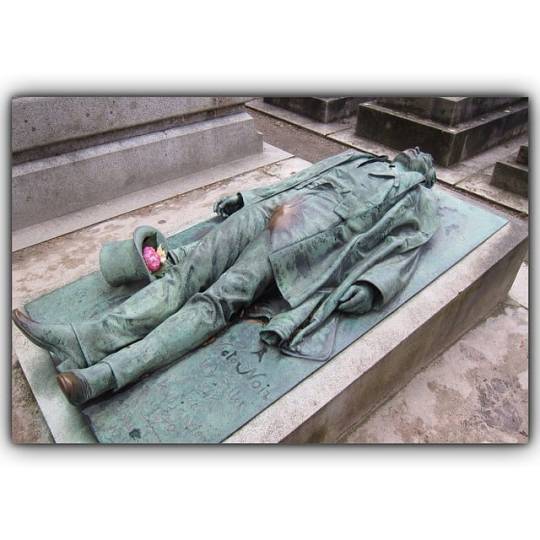
Victor Noir part 3 A life-sized bronze statue was sculpted by Jules Dalou to mark his grave, portrayed in a realistic style as though he had just fallen on the street, dropping his hat which is depicted beside him. The sculpture has a very noticeable protuberance in Noir’s trousers. This has made it one of the most popular memorials for women to visit in the famous cemetery. Myth says that placing a flower in the upturned top hat after kissing the statue on the lips and rubbing its genital area will enhance fertility, bring a blissful sex life, or, in some versions, a husband within the year. As a result of the legend, those particular components of the otherwise verdigris (grey-green oxidized bronze) statue are rather well-worn and shiny. In 2004 a fence was erected around the statue of Noir, to deter superstitious people from touching the statue. However, due to supposed protests from the “female population of Paris,” in fact led by French TV anchor Péri Cochin, it was torn down again. #destroytheday https://www.instagram.com/p/CFU2_d4h6Mj/?igshid=486g22p9475e
44 notes
·
View notes
Photo

NEW REVIEW & DEMO: @lefapedals Destroy The Day Lofi Delay Fuzz Distortion Up and running on our website and on YouTube - be sure to check out both to get all the info on this one. Ciao! . . . #pedaloftheday #guitarpedals #guitareffects #effectspedals #pedalsandeffects #gearnerds #gearpassion #becausetone #knowyourtone #tonefordays #toneheaven #gearshots #gearphoria #notpedalbored #lefapedals #destroytheday #lofi #delay #fuzz #distortion https://www.instagram.com/p/CDLzqgGgd_a/?igshid=d97bnkne8tn4
#pedaloftheday#guitarpedals#guitareffects#effectspedals#pedalsandeffects#gearnerds#gearpassion#becausetone#knowyourtone#tonefordays#toneheaven#gearshots#gearphoria#notpedalbored#lefapedals#destroytheday#lofi#delay#fuzz#distortion
2 notes
·
View notes
Photo

Maxfield Parrish (1870 – 1966) was an American painter and illustrator active in the first half of the 20th century. He is known for his distinctive saturated hues and idealized neo-classical imagery. Parrish's artistic career lasted for more than half a century, and helped shape the Golden Age of illustration and American visual arts. During his career, he produced almost 900 pieces of art including calendars, greeting cards, and magazine covers. Parrish took many commissions for commercial art until the 1920s, and was earning over $100,000 per year by 1910, at a time when homes could be bought for $2,000. John Jacob Astor was an American businessman, real estate developer, investor, inventor, and writer. He was thought to be among the richest people in the world at that time with a net worth of roughly $87 million (equivalent to $2.3 billion in 2019). In 1906, Astor built the Knickerbocker Hotel, located at the southeast corner of Broadway and 42nd Street in Times Square, Manhattan, New York City. The Knickerbocker was a showcase of luxury and quickly became a part of the New York social scene. The $3.3 million hotel contained 556 rooms and luxurious restaurants and bars on the first three floors. Astor had approached Maxfield Parrish and commissioned him to paint a 30-foot-long mural of Old King Cole (from the nursery rhyme) for the bar. Parrish was paid $5,000 to create the massive artwork, comprised of three joined canvas panels. Astor requested that his own likeness be used as the model for King Cole in the painting, as he felt he was basically the King of New York at the time. Whether it was on a dare from Parrish's art world friends, or his own private dig towards Astor, Parrish decided to paint the King passing a royal fart. The attendants in the painting, his guards, servants, and fiddlers three, can all be seen smirking with some almost holding their noses. The bar became so popular that it was nicknamed "The 42nd Street Country Club." New York's wealthy and elite enjoyed many cocktails there throughout the years, overlooked by Parrish's subtlety painted fart joke. #destroytheday https://www.instagram.com/p/CEcEJxWBGN3/?igshid=1m43k8w14vasy
14 notes
·
View notes
Photo
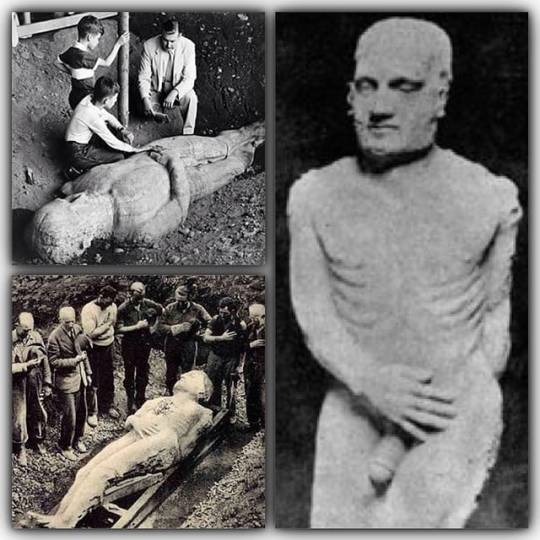
The Cardiff Giant was one of the most famous hoaxes in United States history. It was a 10-foot tall purported “petrified man” uncovered on October 16, 1869, by workers digging a well behind the barn of William C. “Stub” Newell in Cardiff, New York. Both it, and an unauthorized copy, made by P.T. Barnum are still on display. The giant was the creation of a New York tobacconist named George Hull. Hull, an atheist, decided to create the giant after an argument at a Methodist revival meeting about Genesis 6:4 stating that there were giants who once lived on Earth. The idea of a petrified man did not originate with Hull, however. In 1858 the newspaper Alta California had published a bogus letter claiming that a prospector had been petrified when he had drunk a liquid within a geode. Some other newspapers also had published stories of supposedly petrified people. Hull hired men to carve out a 10-foot-4.5-inch-long block of gypsum in Fort Dodge, Iowa, telling them it was intended for a monument to Abraham Lincoln in New York. He shipped the block to Chicago, where he hired Edward Burghardt, a German stonecutter, to carve it into the likeness of a man and swore him to secrecy. Various stains and acids were used to make the giant appear to be old and weathered, and the giant’s surface was beaten with steel knitting needles embedded in a board to simulate pores. In November 1868, Hull transported the giant by rail to the farm of William Newell, his cousin. By then, he had spent $2,600 on the hoax (Nearly $45,000 in 2013 dollars adjusted for inflation). Nearly a year later, Newell hired Gideon Emmons and Henry Nichols, ostensibly to dig a well, and on October 16, 1869 they found the giant. One of the men reportedly exclaimed, “I declare, some old Indian has been buried here!” #destroytheday https://www.instagram.com/p/CE63JAXhHWw/?igshid=1fxqdxeu6j8t1
15 notes
·
View notes
Photo

The Michigan Dogman part 2 In 2007, a digital copy of an 8mm film surfaced on the internet. Dubbed “The Gable Film” because of a small paper tag attached to the box containing the film reel, it quickly attained viral status among cryptozoological enthusiasts. Many people believed it was the long-awaited conclusive evidence of the existence of the Michigan dogman. The entire film is 3.5 minutes long, and appears to have been shot in the mid to late 1970s, due to the clothing and hair styles by the persons in the film, which were most prominent during that time. Early scenes are typical home movie fare: children riding snowmobiles, a German shepherd, a person chopping wood, etc. Toward the end of the film, the photographer is shooting from inside a moving vehicle traveling along a dirt road, when he spots what appears to be a gorilla-like animal moving in a field on the passenger side of the vehicle. The photographer exits the vehicle and seems to pursue the creature for several seconds. Then it appears again, facing the photographer from a ridge about 150 feet away. After a few seconds the creature charges. Rapid movement of the camera suggests the photographer is fleeing the attack. In the last five seconds of the film, there is a flash of teeth and muzzle, and the camera drops to the ground, lying on its left side. A second film titled “The Gable Film Part 2” surfaced later on which seemingly shows a police investigation of the incident recorded in the first reel during which the officers investigating the scene examine a bifurcated corpse (presumably the body of the person recording the previous reel). After years of analysis and debate, the film was finally revealed as a hoax in the finale episode of MonsterQuest on March 24, 2010. #destroytheday https://www.instagram.com/p/CE9d5gnhN6z/?igshid=1u0wvdwdajef7
9 notes
·
View notes
Photo
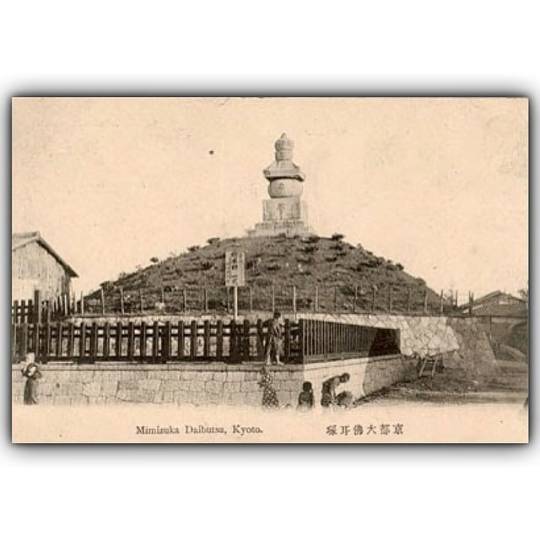
The Mimizuka (literally “Ear Mound”, often translated as “Ear Tomb”), an alteration of the original Hanazuka (literally “Nose Mound”) is a monument in Kyoto, Japan, dedicated to the sliced noses of killed Korean soldiers and civilians as well as Ming Chinese troops taken as war trophies during the Japanese invasions of Korea from 1592 to 1598. The monument enshrines the severed noses of at least 38,000 Koreans killed during Toyotomi Hideyoshi’s invasions. The shrine is located just to the west of Toyokuni Shrine, the Shinto shrine honoring Hideyoshi in Kyoto. Traditionally, Japanese warriors would bring back the heads of enemies slain on the battlefield as proof of their deeds, however, the process of nose collection in lieu of heads became the feature of the second Korean invasion. Remuneration was paid to soldiers by their daimyo commanders based on the number of severed heads they submitted to collection stations, where inspectors meticulously counted, recorded, salted and packed the heads bound for Japan. However, because of the number of civilians killed along with soldiers, and crowded conditions on the ships that transported troops, it was far easier to just bring back noses instead of whole heads. Japanese chroniclers on the second invading campaign do not fail to mention that the noses hacked off the faces of the massacred were also of ordinary civilians mostly in the provinces Gyeongsang, Jeolla, and Chungcheong. In the second invasion Hideyoshi’s orders were thus: “Mow down everyone universally, without discriminating between young and old, men and women, clergy and the laity—high ranking soldiers on the battlefield, that goes without saying, but also the hill folk, down to the poorest and meanest—and send the heads to Japan.“ #destroytheday https://www.instagram.com/p/CFXqi4xhF1_/?igshid=1vqh6xxbbroid
9 notes
·
View notes
Photo

Louis Byron “Lou” Perryman (1941 – 2009), also known as Lou Perry, was an American character actor. He first became involved in the film business back in 1961 while on leave from the US Army. After getting out of the Army in 1968, Lou worked as a production manager at the Texas Pavilion at the World’s Fair in San Antonio. He then worked as a cinematographer, sound man and production manager at the Filmhouse in Austin from 1969 to 1971. In addition, Perryman worked as a sports cinematographer for both NCAA and ABC TV from 1969 to 1977. In 1974, Lou worked behind the scenes on the original Texas Chainsaw Massacre film as an assistant cameraman. Perryman acted in a number of small roles both on television and in films. He played a hostile redneck bar patron in “The Blues Brothers” (1980), a construction worker helping install the Freeling’s pool in “Poltergeist” (1982), and the sheriff in the acclaimed award-winning indie hit “Boys Don’t Cry” (1999). He was memorable as the affable radio station engineer L.G. McPeters in “The Texas Chainsaw Massacre Part 2” (1986), where he was hit in the head with a hammer by Bill Moseley’s character and later has his face sliced off. Perryman also starred in Texas independent filmmaker Eagle Pennell's The Whole Shootin’ Match and Last Night at the Alamo. Among the plays Lou appeared in are “The Time of Your Life,” “Fool for Love,” “The Night Hank Williams Died,” and the especially well-received “In the West, ” which Perryman also co-wrote. Lou was tragically murdered in his home in South Austin, Texas on April 1, 2009, by a 26-year-old man named Seth Christopher Tatum. Tatum, had recently been released from prison after serving several years for aggravated robbery. He had a history of mentally illness (diagnosed as bi-polar), and drug addiction. A month earlier, Tatum had stopped taking his medication because he felt they were not helping him. The night before the murder, he asked his mother to try and admit him into the hospital, but she told him she could not afford it. #destroytheday https://www.instagram.com/p/CCd4XRNhM7q/?igshid=ykk2tkhd0rbz
12 notes
·
View notes
Photo

Maxfield Parrish's Old King Cole mural part 2 The Knickerbocker closed down and was converted to an office building when it was sold in 1920. In 1932, the Parrish mural made its way to the St. Regis Hotel in Midtown Manhattan, New York City. It was installed at The King Cole Bar there in 1948, where it was restored in 2013, and is still on display. As for John Jacob Astor, it is unknown if he ever learned about Parrish's flatulant prank. Astor died in the sinking of RMS Titanic during the early hours of April 15, 1912. He was the richest passenger aboard the ship. #destroytheday https://www.instagram.com/p/CEcERdBBXvJ/?igshid=ye00bgqptx9e
7 notes
·
View notes
Photo

Lou Perryman part 2 On the morning of April 1st, Tatum attacked his mother’s boyfriend, fracturing his skull with garden shears and an iron fireplace poker before fleeing the home. He ended up in a neighborhood several miles away and saw Perryman in his front yard, where the two had a brief conversation. Perryman eventually went inside his home, and was followed by Tatum, who attacked him. Tatum hit Perryman about ten times in the head with an ax before stealing his car and escaping the scene. The next day, Tatum parked the stolen car near the Blackwell-Thurman Criminal Justice Center and confessed to a sheriff’s deputy that he was “pretty sure” he’d killed the owner of a car he’d stolen. Police later found Perryman’s body. On June 26, 2009 Tatum was indicted on two counts of capital murder. Tatum pleaded guilty to murder, as well as assaulting his mother’s boyfriend, and was convicted on February 1, 2011. He was sentenced to life in prison. Lou Perryman was 67 years old when he was murdered. He’s survived by his daughter Jennifer. “He loved human beings; he loved people,” said friend Tyson McLeod. “He probably would have felt sorry for this lonesome son of a bitch that killed him.” #destroytheday (throwback post from April 26th, 2019) https://www.instagram.com/p/CCd4oG7h5S0/?igshid=qv9etdai8ad9
9 notes
·
View notes
Photo

The Mimizuka part 3 The Mimizuka is almost unknown to the Japanese public. A plaque, which was later removed, stood in front of the Ear Mound in the 1960s with the passage, “One cannot say that cutting off noses was so atrocious by the standard of the time.” Most guidebooks do not mention the Ear Mound, and only a few Japanese or foreign tourists visit the site. The majority of visiting tourists are Korean - Korean tour buses are often seen parked near the Ear Mound. In 1982, not a single Japanese school textbook mentioned the Ear Mound. As of 1997, the mound is referred to in about half of all high-school history textbooks according to Shigeo Shimoyama, an official of Jikkyo, a publishing company. The publisher released the first Japanese text book mentioning the Ear Mound in the mid-1980s. The Education Ministry of Japan at that time opposed the description as “too vivid” and pressured the publisher to reduce the tone and also to praise Hideyoshi for religiously dedicating the Ear Mound in order to store the spirits of the killed people. In the 1970s under the Park Chung-hee administration, some of the officials of the Korean government asked Japan to level the monument. However, most Koreans said that the mound should stay in Japan as a reminder of past savagery. #destroytheday https://www.instagram.com/p/CFXqy_hBk4v/?igshid=1xrp2hcspgo01
4 notes
·
View notes
Photo

Anneliese Michel (1952 – 1976) was a German woman who underwent Catholic exorcism rites in 1975 and died the next year, due to lack of medical care. Later investigation determined that she was malnourished and dehydrated; her parents and the priests responsible were charged with negligent homicide. The case attracted media and public attention because of the Catholic Church’s unusual decision to employ the 400-year-old ritual of exorcism, something that had been rarely seen since the 18th Century. The film The Exorcism of Emily Rose is loosely based on her story. Michel was born on September 21, 1952 in Leiblfing, Bavaria, West Germany to a Catholic family. She was brought up along with three sisters by her parents, Josef and Anna. Four years before Anneliese was born, her mother, Anna Michel gave birth to an illegitimate daughter. This was a source of shame for the Catholic family. After she married and gave birth to Anneliese, she apparently harbored feelings of guilt about her first daughter. Unfortunately, Anneliese’s older sister died at the age of eight, but Anneliese reportedly felt like she needed to repent for her mother’s sin and she spent much of her time doing penance for her mother. She was deeply religious and went to mass twice a week. When Michel was sixteen, in 1968, she experienced an epileptic seizure and was diagnosed with temporal lobe epilepsy. She was diagnosed with depression and was treated at a psychiatric hospital. In June 1970, Michel suffered a third seizure at the psychiatric hospital where she had been staying. She was prescribed anti-convulsion drugs for the first time, including Dilantin, which did not bring about immediate alleviation. #destroytheday https://www.instagram.com/p/CDeWL1whbZd/?igshid=1fuxh5okhaojk
6 notes
·
View notes
Photo

The Mimizuka part 2 One hundred and sixty-thousand Japanese troops had gone to Korea where they had taken 185,738 Korean heads and 29,014 Chinese ones, a grand total of 214,752. As some might have been discarded, it is improbable to enumerate how many were killed in total during the war. The Mimizuka was dedicated September 28, 1597. Though the exact reasons as to its construction are not entirely known, scholars contend that during the second Japanese invasion of Korea in 1597, Toyotomi Hideyoshi demanded his commanders show receipts of their martial valor in the destruction, dispatching congratulatory letters to his high-ranking warriors in the field as evidence of their service. Hideyoshi then ordered the relics entombed in a shrine on the grounds of Hokoji Temple, and set Buddhist priests to work praying for the repose of the souls of the hundreds of thousands of Koreans from whose bodies they had come; an act that chief priest Saisho Jotai in a fit of toadyism would hail as a sign of Hideyoshi’s “great mercy and compassion.” The shrine initially was known as hanazuka, Mound of Noses, but several decades later this would come to be regarded as too cruel-sounding a name, and would be changed to the more euphonious but inaccurate mimizuka, Mound of Ears, the misnomer by which it is known to this day. Other nose tombs dating from the same period are found elsewhere in Japan, such as at Okayama. #destroytheday https://www.instagram.com/p/CFXqr8vh10-/?igshid=19lvkapyywgsb
3 notes
·
View notes
Photo

Typhoid Mary part 2 Soper discovered that a female Irish cook, who fit the physical description he was given, was involved in all of the outbreaks. He was unable to locate her because she generally left after an outbreak began, without giving a forwarding address. Soper learned of an active outbreak in a penthouse on Park Avenue, and discovered Mallon was the cook. Two of the household’s servants were hospitalized, and the daughter of the family died of typhoid. When Soper approached Mallon about her possible role in spreading typhoid, she adamantly rejected his request for urine and stool samples. Since Mallon refused to give samples, he decided to compile a five-year history of Mallon’s employment. Soper found that of the eight families that hired Mallon as a cook, members of seven claimed to have contracted typhoid fever. On his next visit, he brought another doctor with him but again was turned away. During a later encounter when Mallon was herself hospitalized, he told her he would write a book and give her all the royalties. She angrily rejected his proposal and locked herself in the bathroom until he left. The New York City Health Department finally sent physician Sara Josephine Baker to talk to Mallon. Baker stated “by that time she was convinced that the law was only persecuting her when she had done nothing wrong.” A few days later, Baker arrived at Mallon’s workplace with several police officers, who took her into custody. Mallon attracted so much media attention that she was called “Typhoid Mary” in a 1908 issue of the Journal of the American Medical Association. Later, in a textbook that defined typhoid fever, she was again called “Typhoid Mary.” Mallon admitted poor hygiene, saying she did not understand the purpose of hand-washing because she did not pose a risk. In prison, she was forced to give stool and urine samples. Authorities suggested removing her gallbladder because they believed typhoid bacteria resided there. However, she refused as she did not believe she carried the disease. She was also unwilling to cease working as a cook. #destroytheday https://www.instagram.com/p/B9J8O-shEBN/?igshid=3ssmwybbsbmz
23 notes
·
View notes
Photo

Iolanda Cristina Gigliotti (1933 – 1987), best known as Dalida, was an Italian singer and actress who performed and recorded in more than 10 languages. In 1950, Dalida participated in the Miss Ondine beauty pageant and won the title, and shortly after began working as a model for Donna, a Cairo-based fashion house. In 1954, at the age of 20, Dalida competed in and won the Miss Egypt pageant, and was crowned Miss Egypt. It was then that she was spotted by French director Marc de Gastyne and, much to the reluctance of her parents, she moved to Paris with the intention of pursuing a career in motion pictures. Around this time she adopted the name Dalila, which was soon changed to the more familiar Dalida. Dalida collected 19 number one hit singles to her name in four languages (French, Italian, German, and Arabic) and has a long list of top 10, and top 20 hits, as well as a myriad of top selling singles and albums largely, spanning over forty years. Dalida ranks among the six most popular singers in the world. Her sales figures today would amount to more than 170 million albums worldwide. Twice honored with “The World Oscar of success of the disc”, she is the only European singer to have won this Oscar at least once. Her 30-year career debuted in 1956 and ended with her last album in 1986, a few months before her death. She received 70 gold records and was the first singer to receive a diamond disc. In December 1968, she was awarded the Médaille de la Présidence de la République by General Charles de Gaulle, the only person from the music industry to have received this medal. She never entered America’s music scene, and though great names of the American music industry wanted to introduce her to the United States, she refused. At the peak of her success, an obsessed fan even tried to kidnap her by using a hammer but did not succeed. #destroytheday https://www.instagram.com/p/CFSUKObBlQZ/?igshid=11etezpdhra69
4 notes
·
View notes
Photo
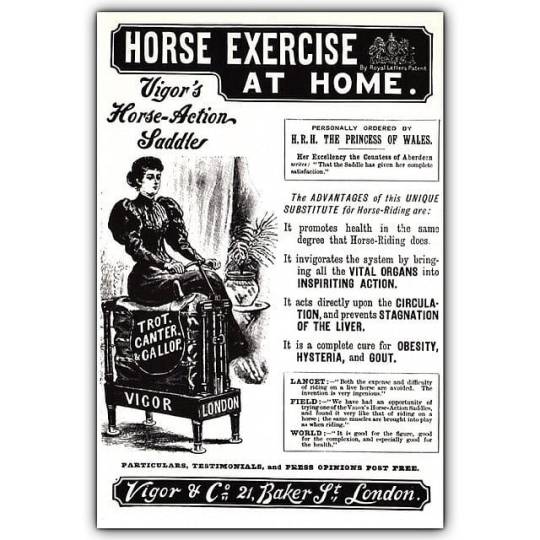
Female hysteria part 4 Treatment methods for female hysteria could get quite elaborate… #destroytheday (throwback post from Aug. 29th, 2015) https://www.instagram.com/p/CD9KuO3BCjG/?igshid=4h2mff4qyk5b
4 notes
·
View notes
Photo
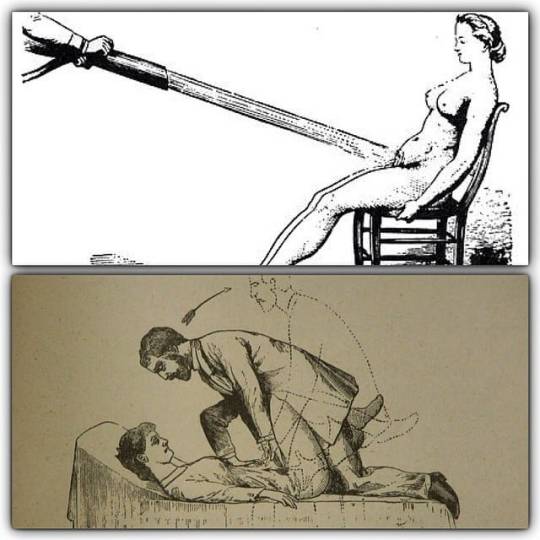
Female hysteria part 2 In 1653 Pieter van Foreest discussed treatment for female hysteria: “When these symptoms indicate, we think it necessary to ask a midwife to assist, so that she can massage the genitalia with one finger inside, using oil of lilies, musk root, crocus, or [something] similar. And in this way the afflicted woman can be aroused to the paroxysm. This kind of stimulation with the finger is recommended by Galen and Avicenna, among others, most especially for widows, those who live chaste lives, and female religious, as Gradus [Ferrari da Gradi] proposes; it is less often recommended for very young women, public women, or married women, for whom it is a better remedy to engage in intercourse with their spouses.” When the vibrator emerged as an electromechanical medical instrument at the end of the nineteenth century, it evolved from previous massage technologies in response to demand from physicians for more rapid and efficient physical therapies, particularly for hysteria. Massage to orgasm of female patients was a staple of medical practice among some (but certainly not all) Western physicians from the time of Hippocrates until the 1920s. In the 13th century. Doctors of that era advised women to relieve their hysteria with dildos. By the Victorian era, however, Female masturbation was viewed as unchaste and possibly unhealthful, so doctors looked for other solutions. Some even advised horseback riding which might provide the clitoral stimulation to trigger orgasm, but many simply manually stimulated their patients to a calming effect. The invention of the vibrator was a necessity that saved a doctor’s hand from cramping during a busy work day. #destroytheday https://www.instagram.com/p/CD9KUKRBXbI/?igshid=hzzmynoyqti6
4 notes
·
View notes